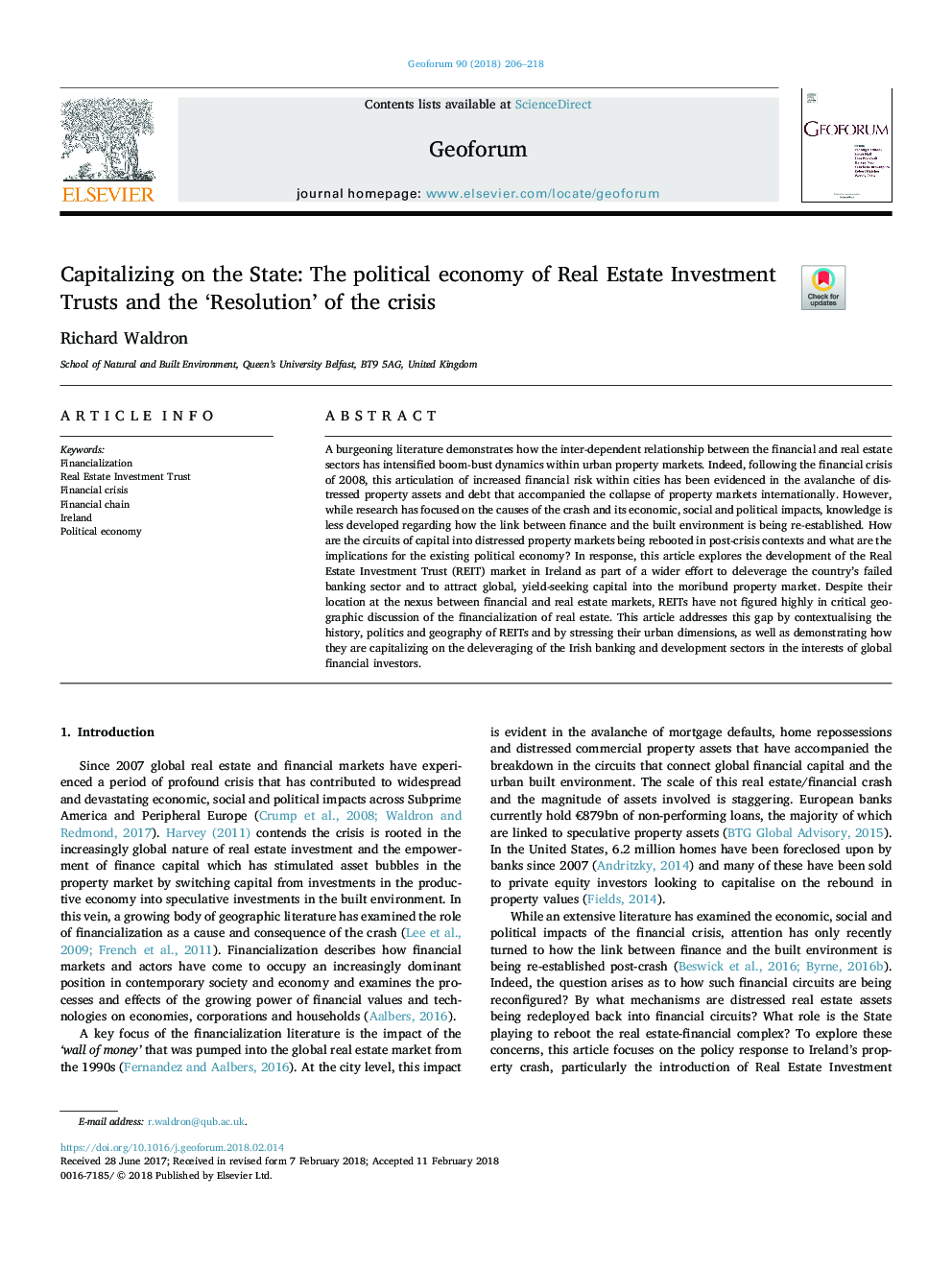| Article ID | Journal | Published Year | Pages | File Type |
|---|---|---|---|---|
| 7353816 | Geoforum | 2018 | 13 Pages |
Abstract
A burgeoning literature demonstrates how the inter-dependent relationship between the financial and real estate sectors has intensified boom-bust dynamics within urban property markets. Indeed, following the financial crisis of 2008, this articulation of increased financial risk within cities has been evidenced in the avalanche of distressed property assets and debt that accompanied the collapse of property markets internationally. However, while research has focused on the causes of the crash and its economic, social and political impacts, knowledge is less developed regarding how the link between finance and the built environment is being re-established. How are the circuits of capital into distressed property markets being rebooted in post-crisis contexts and what are the implications for the existing political economy? In response, this article explores the development of the Real Estate Investment Trust (REIT) market in Ireland as part of a wider effort to deleverage the country's failed banking sector and to attract global, yield-seeking capital into the moribund property market. Despite their location at the nexus between financial and real estate markets, REITs have not figured highly in critical geographic discussion of the financialization of real estate. This article addresses this gap by contextualising the history, politics and geography of REITs and by stressing their urban dimensions, as well as demonstrating how they are capitalizing on the deleveraging of the Irish banking and development sectors in the interests of global financial investors.
Related Topics
Social Sciences and Humanities
Economics, Econometrics and Finance
Economics and Econometrics
Authors
Richard Waldron,
